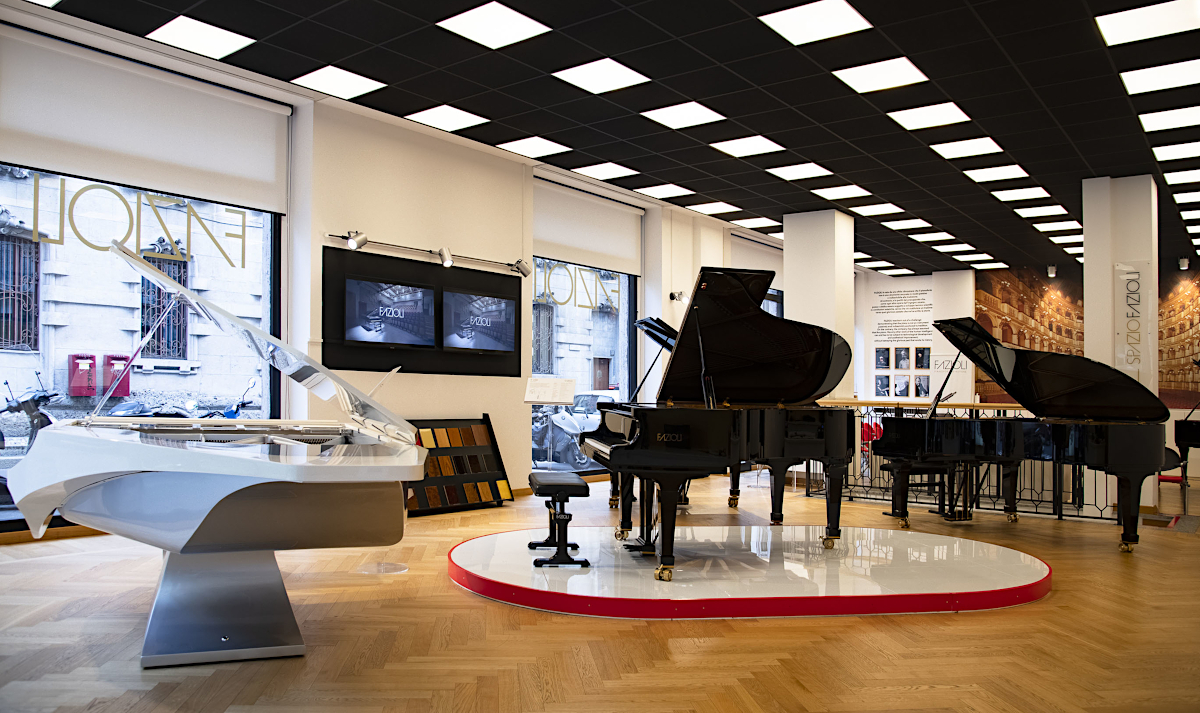
Fazioli Showroom
Via Conservatorio 17 – 20122 Milano (in the corner with Corso Monforte)
milano@fazioli.com – +39 02 76021990
Open from Tuesday to Saturday, h. 10 am – 1 pm and h. 2 pm – 7 pm.
The Fazioli showroom is located just a few steps from the Milan Conservatory of Music, near the Teatro Alla Scala opera house and the cultural heart of the city, in a now-historic store that has been a focal point for students, professionals and enthusiasts since 1919. It is the perfect location for a space dedicated to some of the greatest pianos in the world. Architect Domenico Fazioli curated the design for the restyling, aiming to truly capture the high quality and unique philosophy that distinguishes the company. The showroom is marked by subtle elegance and boasts 180 m2 of floor space and a large glazed frontage facing out onto via Conservatorio and Corso Monforte.
It is a showcase of excellence where visitors can touch and admire all of the models in the Fazioli range. Customers can experience the rich characteristics of the Fazioli sound in this spacious and welcoming setting and appreciate the high product quality right down to the smallest details. Classic black models are alternated with instruments featuring special finishes from the Art Case range of unique Fazioli creations.
In addition to showroom and sales activity, an excellent concert service is also offered, fully aligned with the company philosophy. The flagship instrument in the Fazioli range is available for hire: the F278 concert grand. The quality of the service is determined by the scrupulous technical assistance guaranteed both for preparation in the showroom and tuning in the concert hall. All of this is carried out exclusively by authorized Fazioli technicians in order to guarantee the excellent performance of the instrument.
This is more than just a store, it is a place to discover and fully appreciate the Fazioli world, also through recordings created on Fazioli pianos and exclusive merchandise.
Contact our staff to find out more.
